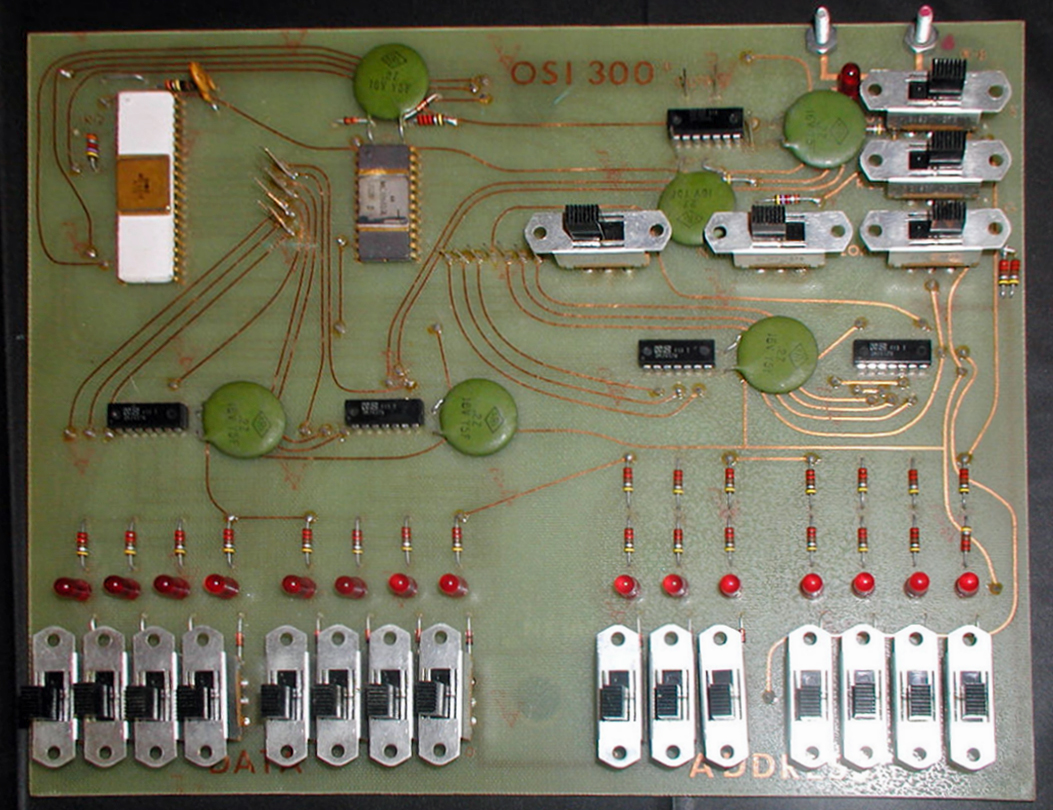A quick introduction to the machine is here. Or read the whole manual here. But in a nutshell: a 6502 with SRAM and a front panel on a board that's the size of two packs of cigarettes. It does have an I/O pin, but no ROM. Nor anything else.
 |
| The original from 1977 |
In the 70s, this type of 'trainer computer' was a great way to learn about programming a CPU, and figuring out its hardware setup. Once you understand the trainer, you're pretty much good to build your own computer with a few added luxuries like a ROM, or a terminal. Not that you really need them, of course, but such things are nice to have.
But on the OSI-300, you lead the Spartan lifestyle. Look up the binary code for an instruction, toggle it in on the front panel, and after you're done with your 20 byte program, you run it. Afterwards, check for the binary output it left for you in some memory addresses.
What's the point for us in 2015? IMHO, there is a huge point to this little kit. Probably not as the future of computing, but perhaps for the evolution of Vintage Computing as a hobby. Let me explain why I love this little board...
The Vintage Computing hobby has matured. Most of us have a nice collection of machines. After all, old computers are not expensive and generally speaking, they are not exactly Super-Rare, despite what eBay tells us. So collecting has evolved into (ouch) hoarding for quite a few of us nerds. And although adding a 143rd computer to the hoard is still satisfying - you never know when you may need another project - it's not going to learn you much that you did not know before.
 |
| The manual can be downloaded from osiweb.org |
It also has hacking potential, certainly because the replica has 8K of RAM, rather than 128 bytes. This is a board simple enough to wire up an EPROM (in a ZIF socket) and see how far you get with porting some monitor program onto it. Bitbang the 6502 to drive a terminal. Why not, learn a lot?
So rather than cram one more Apple IIc into the hoard, spend an afternoon building and learning. If you understand the OSI-300, you're well on your way to build your own 6502 computer. In fact, maybe this kit should be handed out to budding Computer Science students, before they proceed to use gigabyte Java libraries to calculate the result of 1+1. As they do these days...

View comments